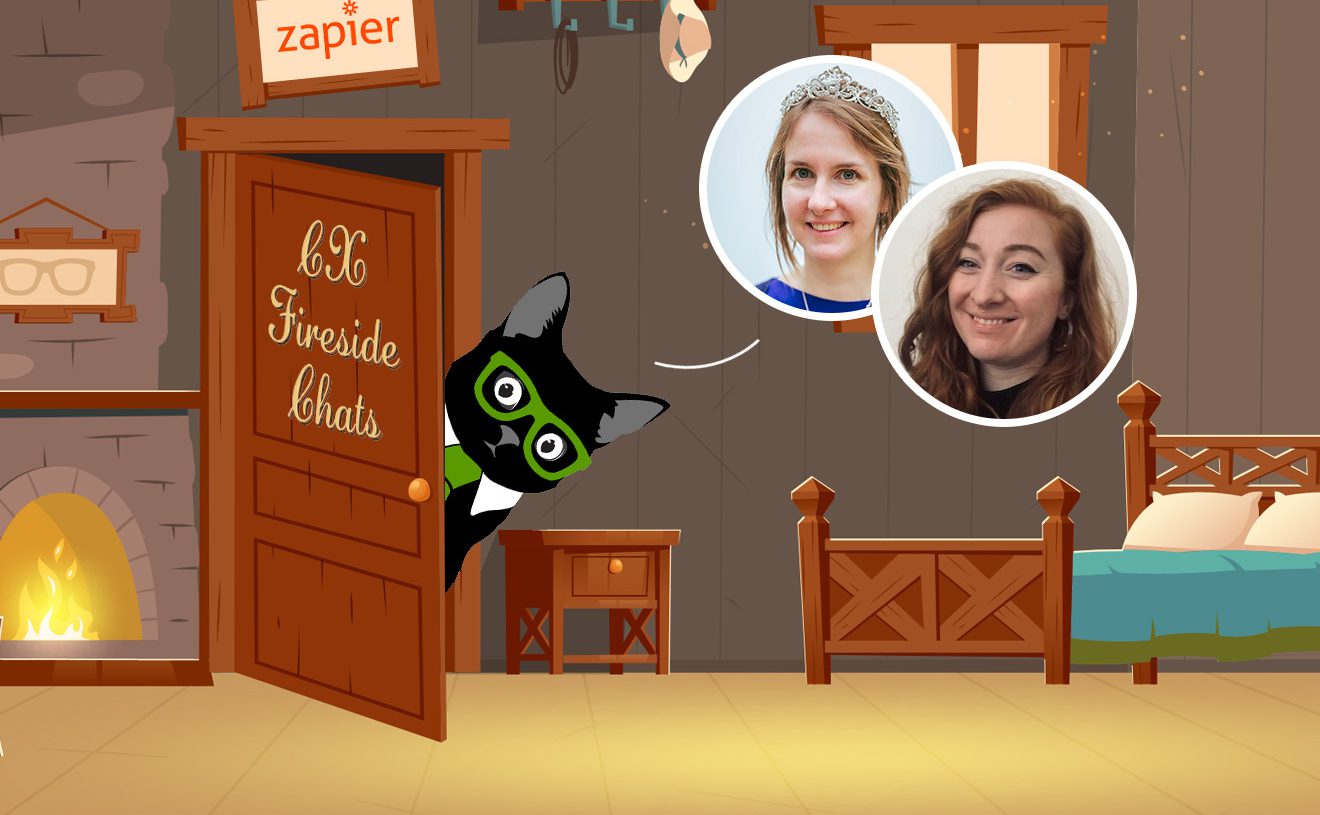Welcome back to cozy Fireside Chats with Klaus and Valentina. On our quest to collect the best CX stories from around the world, we landed on Zapier: the truly international and fully remote company that employs more than 300 people from 27 different countries.
Zapier is a company that can automate anything. So, we were curious to find out how much of their own work they’ve automated, especially in customer service. Join us in this fun fireside chat with Lauren Fearn, the Senior Manager of Global Care Support at Zapier, and find out what’s happening behind the scenes.
Enjoy the full fireside chat and check out Lauren’s key takeaways about company culture, customer service, remote work, and leadership below.
- Slack is not just a communication channel, it’s a remote office. Running a remote team doesn’t mean you have to miss out on spontaneous discussions about support tickets, the latest news, watercooler chats, or the most important presentations. Create separate channels for these kinds of topics and move your communications to Slack.
- Zapier has a crowdsourced internal blog called Async for the most important information that everybody has to know about. The coolest part of the content hub is that everybody can mark Slack messages or discussions to be posted to the blog for the entire team to see by leaving a specific reaction to their message on Slack. (I told you, they can automate anything!)
- Weekly update posts on Friday are a nice way to wrap up the week and let the team know what everybody has been up to, what they’ve learned, and what their challenges are.
- Weekly 1-on-1 meetings have a 10+10+10 structure: 10 minutes for you, 10 minutes for me, 10 minutes for growth. This personal facetime is not spent getting to know what the directs are doing (that’s what the weekly updates are for). Instead, these meetings are used as a place for discussing the employees’ goals and determining how the company can help them achieve those goals.
- Small Improvements is the 1-on-1 software that Zapier uses to take notes, set objectives, and give feedback.
- Foster a culture of asking questions. Zapier is governed by the philosophy that if you’re not asking questions, you’re not going to learn. Everyone is expected and encouraged to ask questions. If somebody hasn’t asked anything on Slack for a while, managers always check in to make sure they’re doing alright.
- Focus on becoming better writers and communicators. Not only are good communication skills necessary for talking to the customers, but it also plays a crucial role in remote company culture. Everybody at Zapier is expected to work on their writing skills and receive feedback on their communication.
- Always assume positive intent. When people are only communicating online, it can be easy to misinterpret another person’s tone of voice, by, for example, feeling that somebody is being very direct. Assuming positive intent reminds people not to take these things personally.
- Divvy’s virtual cards allow the teams to easily spend money on team-building. Zapier’s support folks use it to buy lunches, send gift cards, order food for their colleagues, etc.
- TextExpander allows people to use snippets of the team’s texts while they’re writing. It’s a great way to increase productivity as well as consistency in the team’s communication.
- Self-built global text expander Clips is Zapier’s own internal tool that they use to share content snippets with each other. Having a customized solution besides the public TextExpander enables the team to share information more efficiently and exactly in the way they need it.
- The 3-time rule for developing new ideas and processes states that when they’re rolling out anything new, they need to communicate it three times: at small team meetings, at the whole team meeting, and publish it in their internal blog Async. That’s how they make sure that everyone’s on board with the change.
- 24-hour decision-making windows make sure that people working in different time zones have a chance to chime in and don’t feel that all decisions have already been made during their off-hours. These topics are specifically flagged for feedback, and everybody is expected to weigh in – even if it is to confirm that they are OK with that because silence doesn’t always mean agreement.
- Zoom calls for working together is a fun way of imitating the feeling of being located in the same room. Everybody’s working on whatever they need to do while being present in a team call.
- Last but not least, keep support weird. That’s the motto that Zapier follows to create a culture where colleagues can be friends, work-related newsletters are engaging and fun, and people from different cultures and timezones work together as one team.
These are just a few glimpses of the insightful chat we had with Lauren from Zapier. Make sure you watch the entire video to learn more about building a beautiful company culture that scales as the team grows.
Share your thoughts and questions in the CX quality community Quality Tribe. And listen to the other episodes in the series:
- Stacy Justino from Wistia
- Automattic, the Makers of WordPress.com
- Life in a Contact Center
- Martin Kõiva, CEO and Founder of Klaus
- VP of Customer Service at Pipedrive
- Enterprise Customer Success Executive at Zendesk
- The Hyper-specialized Future of Customer Success at Gong
Love podcasts? We’ll publish all of the Fireside Chats on all major platforms including Spotify, Apple Podcasts, Google Podcasts, and others.
Keep reading: 20 Best Customer Service Books of All Time


